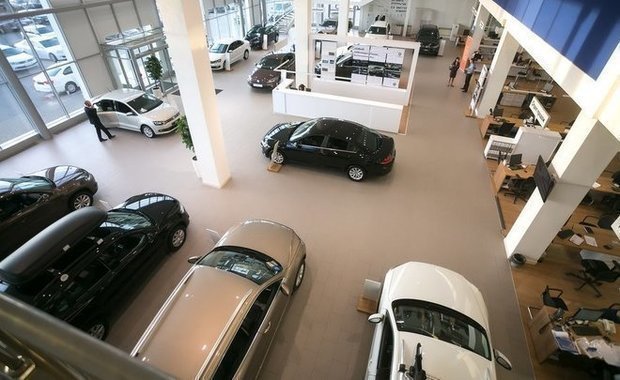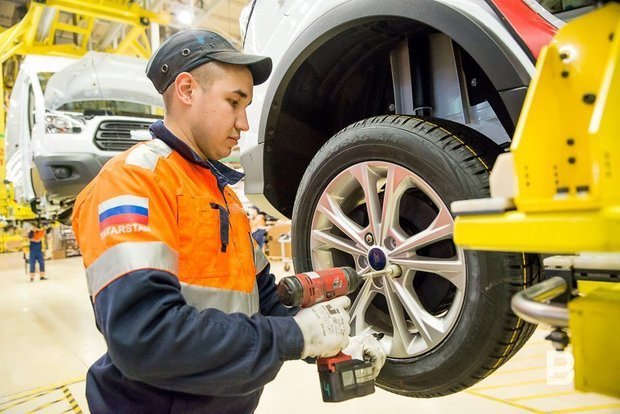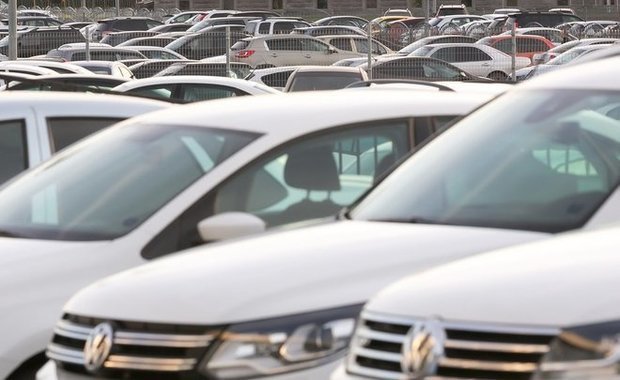Mikhail Porvatov, RSA: ‘We can make a cautious assumption that everything has stabilised’
Deputy Chairman of the Russian Union of Motor Insurers (RSA) — about the interim results of 2023, future digitalisation, and spare parts for cars

Since the end of last year, there have been significant changes in the domestic auto insurance market caused by the restructuring of the geopolitical situation around the world. For example, the withdrawal of Western companies from Russia and the overlap of logistics chains led to a huge increase in the cost of spare parts, and then to their shortage. In these conditions, the state was forced to make various adjustments, starting from the basic OSAGO (Compulsory insurance of civil liability of vehicle owners — ed.) tariffs and ending with the coefficient for accident-free driving. Whether it was possible to return the balance to the Russian markets and recover from the losses that occurred, Mikhail Porvatov, the deputy director of the Department for the Development of Property Insurance of Individuals of the All-Russian Union of Insurers, as well as the deputy chairman of the RSA on insurance methodology, tells in the author's column for Realnoe Vremya.
“Insurers are looking for this balance”
Speaking about the interim estimates of the current year, it should be noted that in 2022 there were two extensions of the tariff corridor at once. In January and September last year, the average premium was about 6,8 thousand rubles against 5,6 thousand in 2021. Thus, the growth was 21%. As for the current situation, in April of this year the average premium reached 7,3 thousand rubles. In comparison with last year, there is indeed an increase, but in general it is decreasing. By 8% lower than in the first quarter, and by 6% less than in March, when there were 7,8 thousand.
Insurers are looking for this balance. Regarding the number of contracts: it decreased last year. For example, there were 42 million in 2021, and in 2022 — 40 million (-5%). To date, their number roughly corresponds to last year's period (but may be more or less by 1%).

It should be understood that last year car sales dropped tremendously. Therefore, it is quite possible that the reduction in the number of contracts is due to that car owners have lay their cars up. So far, we see the continuation of this trend. And this is despite that now sales have started to grow again (compared to March and April last year). But there is still too little time has passed, so we will need to look at the situation at the end of the year.
As for the average payout, by the end of April it amounted to 8,6 thousand rubles, or by 4% more than in the first quarter. The average payout is generally growing now. It started last year, when spare parts went up by about 28-30%. Thus, the tariff horizon was expanded.
“Spare parts were available, and moreover, they were imported at the rate as before”
What was in 2022? Back in March last year, car dealers sharply raised prices for spare parts, which was a speculative price increase. Because then spare parts were available, and moreover, they were imported at the rate as before — as in January or February. Then, these prices settled down and became by 30% less. Then there was a shortage. That's because by the summer, the “official” spare parts that were supplied and were available simply disappeared. They were simply used up, and new logistics chains were not built. The situation was rather uncertain.
However, now we can make a cautious assumption that everything has stabilised. We do not see a shortage of spare parts, although they are more expensive. But this is also because they do not come directly from the manufacturer, but through third countries. Another thing is that their delivery times have been increased, because again they do not go directly. This is the reason for the insurers' proposal to increase the repair deadline from 30 to 45 days. The state authorities understand all this and therefore support it. However, it is also a lie to say that there is no shortage at all.

Once again, in April 2023, the average OSAGO premium was 7,3 thousand rubles. This is higher than in 2022, but less than in the first quarter and March of this year. At the same time, the average premium has increased (compared to 2022), but now it is decreasing. This whole trend is unstable, and we need to see what happens next.
“The individualisation of OSAGO is absolutely the right step”
For car owners, of course, it is more convenient to receive in-kind compensation. That is why a few years ago its priority under OSAGO was legalised. The citizens eventually had their cars repaired! But due to that the delivery time of spare parts has increased and insurers often simply stopped keeping within 30 days, this standard has switched to a monetary form of compensation.
That is, they break contracts with the stations, because these stations cannot physically repair the car in 30 days. If the repair is complicated, then they switch to a natural form, and it is not so easy for the client to find spare parts himself. Everyone suffers from this. The way out of this situation could be a two-measure implementation. The first is an increase in the repair deadline, which will solve the problem with spare parts. The second is the legalisation of the use of repaired spare parts, which solves the problem when there are simply no consumables.
The individualisation of OSAGO is absolutely the right step, because nothing better than the market determines the optimal cost. This, in principle, applies to all types of insurance. It's just that OSAGO rates are more regulated, because the Central Bank is stubbornly moving in this direction in the insurance market. We see that last year the premium increased due to the rise in price of spare parts, but this year it is already declining. In this way, insurers show their social responsibility. That is, they do not set tariffs just according to the maximum bar, but based on the real market value of a particular product.
“The absence of a policy when operating a vehicle is much more dangerous”
The OSAGO reinsurance pool and cost reduction are slightly different things. The pool was created to ensure availability. We talked about the individualisation of insurance rates, but it does not always reflect reality to the maximum extent. That is, the base tariff on the upper limits may not be enough to cover losses. Therefore, this pool is designed not to reduce, but to ensure the availability of OSAGO for the most unprofitable cases. Speaking of taxis, I note that we see how this system works. Because 79% of all taxi cars insured under OSAGO are also reinsured. That is, it confirms the fact of unprofitability segment. Nevertheless, insurers work with taxis. Thus, they should have no problems with the availability of OSAGO. As for the premium, for a taxi, it reflects the degree of risk. This is a very emergency segment. They drive a lot and are 6 times more likely than individuals to get into an accident. Accordingly, the losses on them are higher and the premium is higher.
I believe that it is necessary to raise fines for the driver's lack of a compulsory insurance policy. Because, firstly, the existing fine of 800 rubles has not changed in the last 20 years. It is enough to calculate the inflation rate for this period, and it is clear that it is outdated. For example, for parking in Moscow, the fine is 5 thousand rubles. However, the degree of public danger due to improper parking and driving without OSAGO are not comparable. The absence of a policy when operating a vehicle is much more dangerous. Therefore, the fine should be higher.

At the moment, the legislator has already decided that the next step is the digital settlement of OSAGO losses. So, on July 15, 2023, the relevant law comes into force. This is absolutely correct. The 21st century is a time of digitalisation, that's why insurance is getting digitalised. Another question is: how much will it be in demand? Because the frequency under OSAGO is 6%. That is, not every year people get into accidents. Also today, everyone downloads mobile apps, but they are constantly improved. If a person gets into an accident, let's say, in 5 years, then the mobile application will already be completely different. But nevertheless, there should be such services, and they are provided for by the law on OSAGO. Therefore, electronic regulation will be actively developed in the future.
There is no emergency housing insurance programme in any of the regions of Russia
If we also touch on the topic of housing insurance against emergencies, then things are much worse there. The thing is that on August 4, 2019, amendments to the emergency law came into force, which were designed to provide compensation for damage caused to the owner of the residential premises at the expense of insurance services. The regions were given the right to develop their own housing insurance programmes, but due to that they did not have and still do not have any incentives, no such programme has been approved in any of the subjects to date. This situation is actually very strange, because every year there are explosions or fires somewhere and money is spent. It would be possible to shift compensation for this damage to insurers, but this does not happen. We hope that this situation will change.
Reference
The author's opinion may not coincide with the position of the editorial board of Realnoe Vremya.